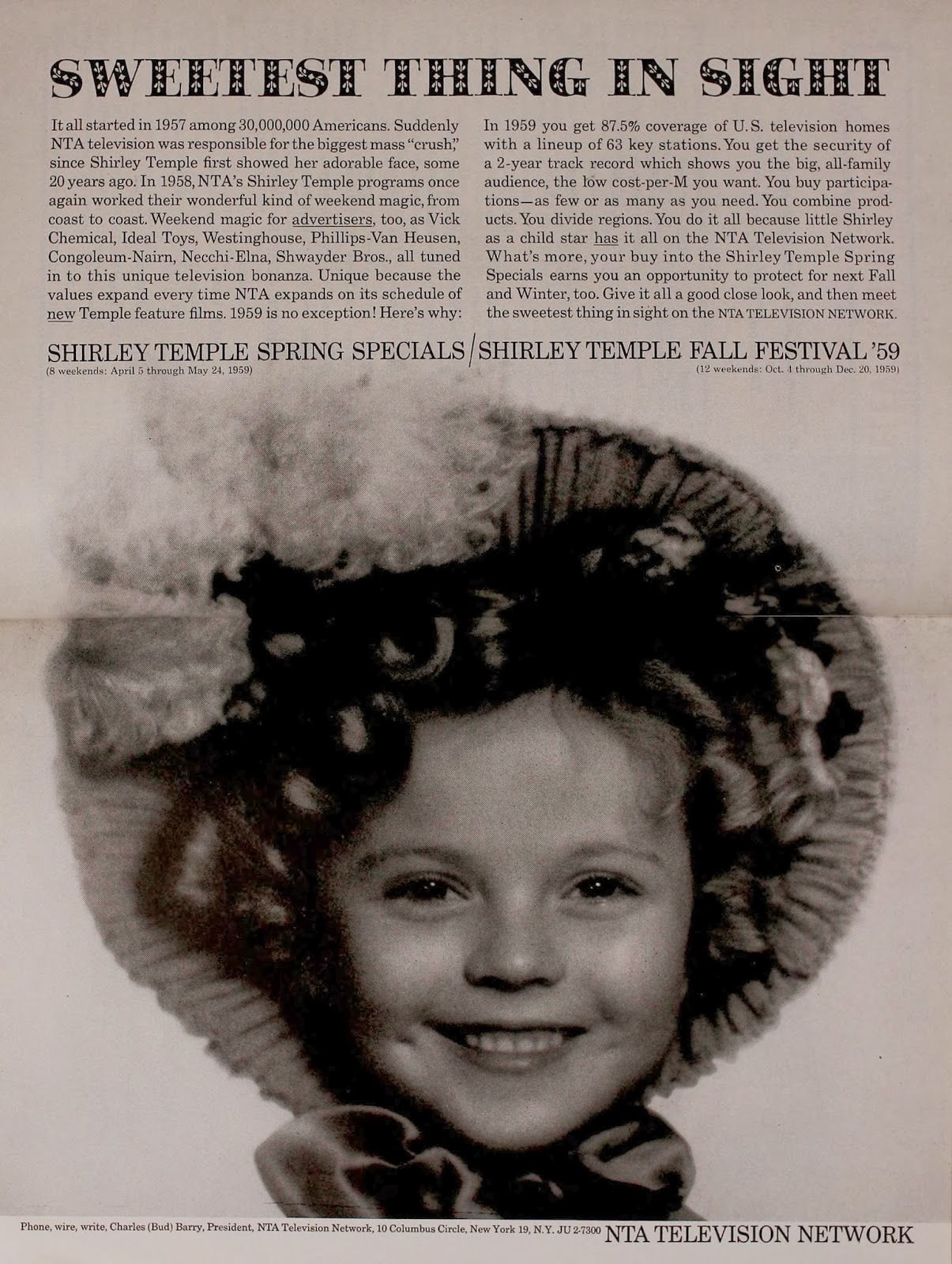Vintage Mack Sennett comedies, of course, were seen in chopped-up highlights on HOWDY DOODY, and we've posted before on the silent animation that was being peddled by distributors for the earliest cartoon shows. As adult programming, silent movies had a harder row to hoe... although, on the local level, a few brave souls gave them a chance.
On June 29, 1953, KRON-TV, San Francisco's NBC affiliate, aired THE EAGLE with Rudolph Valentino as a prime time entry. No ratings info is available, although the fact that it was slotted opposite I LOVE LUCY's second season finale strongly suggests that it was not a success.
During the last third of 1956, Steve Allen reduced his TONIGHT SHOW duties to three days per week (Ernie Kovacs hosted the other two), and the show was cut back from 90 minutes to an hour. WNBC in New York City took over the remaining half-hour with a local show called OLD, OLD STORY, consisting of early Hal Roach and Mack Sennett comedies, such as Sennett's LIZZIES OF THE FIELD (1924) and Roach's DODGE YOUR DEBTS (1921) (which starred Harold Lloyd's lesser known brother Gaylord). The listing above is for November 30, 1956 and if you're a silent comedy expert but don't recall that title, it's actually FATTY AND MABEL ADRIFT (1916), with Roscoe "Fatty" Arbuckle reduced to "we'd better not publicize him so we don't get any nasty letters."
By 1961, Robert Youngson's two silent film compilations (THE GOLDEN AGE OF COMEDY and WHEN COMEDY WAS KING) had proved to be huge draws for kids, while on TV, both the Hal Roach "Little Rascals" and MGM "Our Gang" sound shorts were big successes. National Telepix put together two 78-episode series culled from various silent comedy series. The first, MISCHIEF MAKERS, came mainly from the silent Our Gang series produced by Roach. The second series, still untitled in this trade ad, was eventually called COMEDY CAPERS (featuring "Larry Seaman" among other unknowns).
The early sixties also presented some silent-based prime time shows of varying quality. FLICKER FLASHBACKS, produced by Jay Ward and his TV cartoon crew, used snippets from comedies, dramas and action pictures assembled in a half-hazard, frantic pace, along with "dialogue" and narration chock full of cheap laughs. More respectfully, SILENTS PLEASE used vintage footage to pay homage to the era and its stars. Neither series lasted very long.
When network TV gave up on silents, public (or educational) television picked up the slack. The WTTW, Chicago-produced series THE TOY THAT GREW UP, which debuted in July 1968, presented uncut features and short subjects in the same respectful manner as SILENTS PLEASE. Befitting its Public TV origins, host Don Ferris provided background information about the films and their stars.
My initial exposure to Charlie Chaplin was in the November 9, 1969 broadcast of Youngson's 3rd feature, THE DAYS OF THRILLS AND LAUGHTER (1961). As I freely admitted in its introduction, my book CHAPLIN'S VINTAGE YEAR got its title from the narration in this terrific compilation. I'm certain the excited 10-year-old that I was sat joyously in front of the set on this Sunday afternoon... and just as certain that I was not permitted to stay up for the 8:30 PM rebroadcast, given I had school the next morning!
Around that same time, New York's Public TV station WNET-13 would run Chaplin comedies regularly on weekday afternoons during Christmas break and in the summer. These shows were hosted by Herb Graff, a faculty member of NYU and well-known silent comedy aficionado. In July 1973, Graff and WNET expanded the scope of this programming with a series that highlighted several comedians. This series provided my first exposure to Buster Keaton and Harry Langdon.
 Television's best-known silent film program is probably THE SILENT YEARS, produced for Public TV by renowned film collector and historian Paul Killiam (who'd been one of the contributors to SILENTS PLEASE), which debuted in NYC in July 1971. (What was it about July that Public TV thought ideal for silent film programming?) Fondly remembered for William Perry's fine piano scores and the erudite Orson Welles as host, THE SILENT YEARS introduced many future historians not only to comedic gems such as THE GOLD RUSH (1925) and THE GENERAL (1926), but also terrific exemplars of silent action-adventure (THE MARK OF ZORRO, 1920) and drama (ORPHANS OF THE STORM, 1922).
Television's best-known silent film program is probably THE SILENT YEARS, produced for Public TV by renowned film collector and historian Paul Killiam (who'd been one of the contributors to SILENTS PLEASE), which debuted in NYC in July 1971. (What was it about July that Public TV thought ideal for silent film programming?) Fondly remembered for William Perry's fine piano scores and the erudite Orson Welles as host, THE SILENT YEARS introduced many future historians not only to comedic gems such as THE GOLD RUSH (1925) and THE GENERAL (1926), but also terrific exemplars of silent action-adventure (THE MARK OF ZORRO, 1920) and drama (ORPHANS OF THE STORM, 1922).















+Times-Tribune+3-14-11+advert+p2.JPG)










